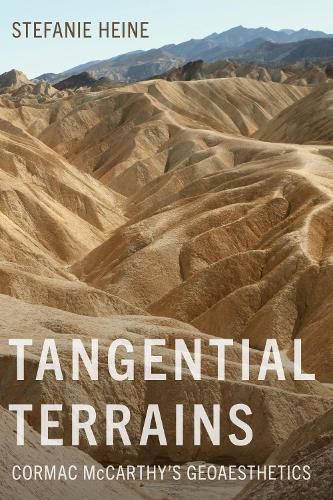Readings Newsletter
Become a Readings Member to make your shopping experience even easier.
Sign in or sign up for free!
You’re not far away from qualifying for FREE standard shipping within Australia
You’ve qualified for FREE standard shipping within Australia
The cart is loading…






Tangential Terrains is an ecocritical study of the work of Cormac McCarthy, focusing primarily on his depictions of the desert and inorganic nature in Blood Meridian. Close readings of previously unexamined archival manuscripts and drafts shed new light on McCarthy's compositional processes, revealing how the development of written matter in the novel-in-progress can correspond to geological processes like erosion, erratics, stratification, and continental drift. Blood Meridian's emergent geoaesthetics reveals forces operating according to other-than-human principles, as literary desert terrains retain a passive resistance, or weak agency, which presents a radical disturbance of anthropocentrism, mirrored in the novel's style. Though the mediated unstable deserts in Blood Meridian defy appropriation, they are neither untouched nor untouchable: the borderlands bear the wounds and "blood meridians" of a non-chronological history of violence, tangential to the massacres of Native American and Mexican peoples depicted in the novel.
Stefanie Heine's reading of Blood Meridian offers a crucial contribution to and intervention in contemporary ecocriticism, Anthropocene criticism, and New Materialist theories, encouraging readers to critically rethink customary notions of entanglement, kinship, and agency.
$9.00 standard shipping within Australia
FREE standard shipping within Australia for orders over $100.00
Express & International shipping calculated at checkout
Tangential Terrains is an ecocritical study of the work of Cormac McCarthy, focusing primarily on his depictions of the desert and inorganic nature in Blood Meridian. Close readings of previously unexamined archival manuscripts and drafts shed new light on McCarthy's compositional processes, revealing how the development of written matter in the novel-in-progress can correspond to geological processes like erosion, erratics, stratification, and continental drift. Blood Meridian's emergent geoaesthetics reveals forces operating according to other-than-human principles, as literary desert terrains retain a passive resistance, or weak agency, which presents a radical disturbance of anthropocentrism, mirrored in the novel's style. Though the mediated unstable deserts in Blood Meridian defy appropriation, they are neither untouched nor untouchable: the borderlands bear the wounds and "blood meridians" of a non-chronological history of violence, tangential to the massacres of Native American and Mexican peoples depicted in the novel.
Stefanie Heine's reading of Blood Meridian offers a crucial contribution to and intervention in contemporary ecocriticism, Anthropocene criticism, and New Materialist theories, encouraging readers to critically rethink customary notions of entanglement, kinship, and agency.